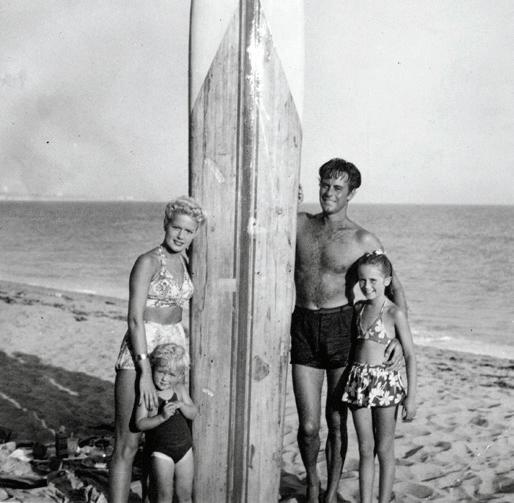
10 minute read
OPINION
From the publisher HAYLEY MATTSON
it helps to ensure that the information that is being shared with the public is accurate, fair, and balanced.
‘ e Surfer’s Palm Tree’ Malibu’s forgotten history
The 1973 movie “Serpico,” starring Al Pacino, traced the true story of an undercover police o cer in New York City who refused to engage in illegal and unethical activities commonly in practice in the NYPD. In real life, Frank Serpico testi ed before the Knapp Commission on Police Corruption with the following admonishment: “ e problem is that the atmosphere does not yet exist in which honest police o cers can act without fear of ridicule or reprisal from fellow o cers.” e same policing culture that existed in the early 1970s has changed very little over the past half-century. o cers and the victim were black there has been a muted degree of protest across the country, such as was witnessed in the George Floyd case. To suggest that this is not a case of institutional racism is unwarranted. e swift actions taken by the Memphis Police Department and the ongoing e orts to relieve others who stood by and took no actions whatsoever, such as the rst responders who inexplicably did not render attention to the victim for nearly a half-hour, and the family’s very public grieving and calls for non-violence, eerily echoing Martin Luther King, Jr.’s mantra in the city where he was killed nearly 55 years ago, most likely have had a calming e ect to thwart violent protests.
Bakari Sellers, a former South Carolina state legislator, civil rights attorney and CNN contributor, captured the lack of outrage as follows: “For many Black folks, the race of a cop is cop.”
All of us at e Malibu Times are dedicated to providing our readers with high-quality journalism that is both informative and trustworthy. Journalists play a critical role in uncovering and reporting on important issues that a ect our community and society.
One of the hallmarks of professional journalism is the commitment to writing according to veri able facts that have been thoroughly researched and presented in an objective manner. is is an important aspect of journalism as
Recently we published two articles a few weeks apart by two di erent journalists that the community and local o cials did not feel represented both sides of the subject. In addition, one resident felt as if what we reported was “patently incorrect.” We welcome all feedback and criticism; we are open to listening to the community and o ering a follow-up review of the subject as new information becomes available. is does not necessarily mean that we are ad- smaller, and except for some minor vandalism, peaceful. mitting we were incorrect in our reporting; however, it means that we are willing to hear your concerns and look Ito them and report back on our ndings.
We at The Malibu Times are proud to work with a team of talented journalists who are committed to writing according to the highest standards of accuracy and integrity, even in the face of unprecedented challenges. We believe that by providing our readers with reliable and trustworthy information, we can help to build a better informed and more engaged society. ank you for your continued support.

Toy Crazy celebrates 25 years in Malibu
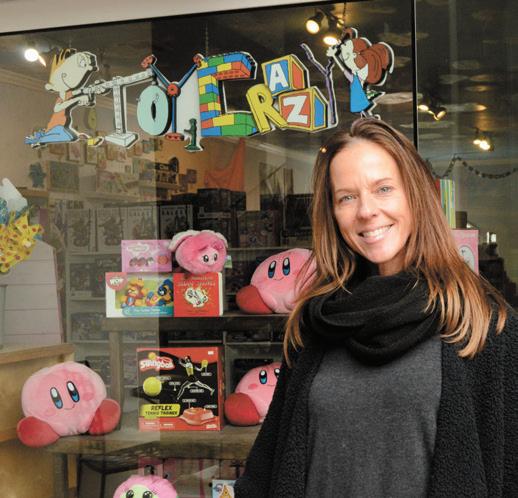
Store owner Melissa Moore praises the love and support from generations of families in the community
With the help of technological advances, we are capable of seeing with our own eyes acts of unthinkable savagery perpetrated by those who wear a badge and a gun under the pretense of protecting and serving the public. e most recent videos document the brutal and horri c treatment of a 29-year-old African American in Memphis, Tennessee, under the questionable pretext of a tra c stop, which has left a family devastated with grief and a 4-year-old fatherless.
In the past several years, we have had to witness similar police atrocities, leaving some to question the need to defund and others the need to seriously reform policing policies and their implementation.
Shaun Harper writes in Forbes: “In 1897, W.E.B. DuBois noted that among the most corrosive e ects of racism was its tendency to make its victims see themselves through the eyes of people who hold them in contempt.” Harper asserts that institutional racism is a culture to which those in policing adhere, explaining how “ ve Black men could engage in police brutality, leading to the death of another Black man. ey participated in the same trainings as white cops.
On May 25, 2020, George Floyd was murdered by Minneapolis police o cer Derek Chauvin, who kneeled on his neck while he was handcu ed on the ground for nine minutes. On Jan. 7, 2023, Tyre Nichols was tased, pepper sprayed, and beaten to death by six Memphis police o cers.
MHS grad’s scripts for ABC’s ‘ e Good Doctor’ inspired by another MHS grad Co-Writer Nathalie Touboul’s episode, based on the life of Lyon Herron and his struggle with a rare disease, aired Jan. 23 e so-called “blue wall of silence,” where police o cers refuse to speak out against their own, regardless of the seriousness of the crime, error, or misconduct, is all too similar to the Italian code of Omertà employed by criminal organizations like the Cosa Nostra. We must execute changes that encourage respect, trust, and condence in law enforcement. ey entered a profession that was born of anti-Blackness (slave catchers were America’s original law enforcement o cers). ey worked in a place where decades of anti-black policies and tactics were created. How a police department behaves, thinks about Black communities, and mistreated Black people informs how its employees engage with the Black citizens they were hired to protect and serve — even when they’re Black.”
Calls to reform quali cations for duty, address systemic racism, institute community policing, and eliminate qualified immunity, among others, have failed to see legislative redress, and the sad reality is that we should expect police violence to continue.
As in most public policy issues, it is often somewhat more complicated than it at rst appears. While diversifying police departments has made some improvement in police culture, it is only a beginning.
All four Minneapolis police ofcers were red the next day after the department reviewed the videos, and a short four days later, Chauvin was charged with murder. Memphis moved slower: e six o cers were red two weeks later, indicted a week after that, and have been charged with second-degree murder. In both cases the victims were Black, and both pled for their mothers to help them as they were being killed on our streets by abusive cops. Soul crushing.
Waves golfer to play in Augusta National Women’s Amateur Pepperdine’s golf season begins at erese Hession Regional Challenge in Palos Verdes Estates Feb. 12 ere is an underlying current that suggests that because both the

In the most recent travesty, which resulted in the death of Tyre Nichols, both the perpetrators and the victim were black, sparking conservative outcry that racism was not a factor. Ironically, some on the liberal spectrum are questioning whether racism played a role in the swift ring and serious charges, including second-degree murder, of the ve o cers involved to date in the vicious treatment of Mr. Nichols.
Professor Jody Armour, a USC law professor o ers, “We have a very simplistic way of approaching the problem of policing and believing that representation is some kind of silver bullet … it’s not just a Black and white issue, but a Black and blue one. And when you put on that blue uniform, it often becomes the primary identity that drowns out any other identities that might compete with it.” e dichotomy in our country’s reaction to these events is striking and thought-provoking. e Floyd murder sparked the biggest national protests since the civil rights movement of the 1960s, in over 2,000 cities, 200 of which had to impose curfews due to looting, arson, and murders. Sixty-thousand National Guard personnel were deployed. Courthouses were firebombed, police stations were vandalized or burned, and monuments were destroyed around the country. Up to $2 billion in property damage occurred in the riots, and at least 18 people died, with many injured. In contrast, the protests in response to the Nichols killing have been exponentially
Shifting the focus on certain actions of individuals as bad apples is, excuse the expression, a cop-out. We must focus on racism as a systemic problem.
Lance Simmens is an independent columnist for e Malibu Times, he along with Don Schmitz write a bi-weekly column on national topics from the perspective of their political leanings you can forward any comments you have to editorial @malibutimes.com.
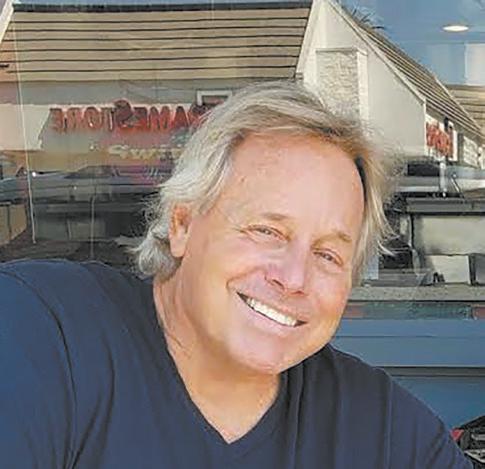

Why is that?

As repulsive as Chauvin’s kneeling on Floyd’s neck was, the sheer brutality of the beating of Nichols last month with sts and batons, while he was restrained with his hands behind his back, eclipses it. Both victims were Black, with the obvious di erence being in the Floyd case, the o cers were white, whereas in the Nichols case, all the o cers were also Black. Some have tried to rationalize the di erence in our reaction to the responsiveness of the government in taking to task the police brutality in Memphis, but in reality, the Minneapolis police ocers were terminated and charged with a crime quicker. Clearly, it’s the race of the abusive police that makes the di erence.
I am a strong supporter of law enforcement, which is sometimes a violent and messy business when they need to subdue criminals who are resisting arrest. It can involve profanity, pepper spray, Tasers, batons, sts, and sometimes gunghts. ey have a tough job, and sometimes it’s ugly, but overwhelmingly law enforcement is measured and conscientious. But when we see white police o cers violently subduing black people, it triggers strong negative emotions in Americans.
Until the last half-century, we had a horrible record in parts of the country of abusive behavior to our Black citizenry. On bloody Sunday, March 7, 1965, in Alabama, state and county police brutally attacked peaceful civil rights marchers on horseback with whips and clubs, hospitalizing dozens. Dr. Martin Luther King Jr. organized another march two days later, and the brutal images galvanized America. e civil rights act was passed, with Democrat support only in the mid-60 percent range, while Republican support was in the 80th percentile, led by Everett Dirksen. We’ve come a long, long way, and we are not going to go back, but we are still hypersensitive to those images. Many Democrats regularly exploit the race card to attack political opponents, which is in ammatory and dangerous. In the recent Nichols case, President Biden still invoked his race, even though the police beating him were also Black. When an abusive cop is white, many presume his actions are racially motivated, with or without evidence, in part because the left inculcates entire communities with a drumbeat of “systemic racism.” Just elect them into power, and they will get it all xed, they say, while proposing disastrous policies like defunding law enforcement. Where tried, defunding and disengagement has resulted in skyrocketing crime including rape, burglary, drug dealing, and murder, disproportionately in black neighborhoods. Interestingly, Gallup polls have shown that black Americans prefer to maintain police presence in their neighborhoods similar to the percentages of other Americans. However, Black and white Americans di er in their con dence in police more than any other U.S. institution, a 29 percent gap according to a 2021 Gallup poll. We have a lot of work still to do.
However, there may be a silver lining to this latest tragic event in Memphis. e police brutality, lmed and evident for all to see, doesn’t have the racial overtones of others, although the radical left will still try to contrive a theory on why it’s racism based. Truth is, all Americans of all races want safe communities for their children and to run their businesses. Maybe we are turning a corner where we all view them as “our police,” and work together for constructive reforms to eliminate abuse while maintaining their e cacy. Maybe.
Don Schmitz is an independent columnist for e Malibu Times, he along with Lance Simmens write a bi-weekly column on national topics from the perspective of their political leanings you can forward any comments you have to editorial@ malibutimes.com.
Hayley
Hayley
Nic Mattson
Cami Martin
Samantha Bravo

Michael Chaldu
Evan Rodda, Neil Schumaker, Jen Rodman, Anthony Atkins
Devon Meyers, Julie Ellerton

Jimy Tallal, Judy Abel, McKenzie Jackson, Burt Ross, Emmanuel Luissi, Benjamin Marcus
Mary Abbott, Anthony McDemas, Dorie Leo
Sirens
The following incidents were reported between:
JAN 15 - Jan 20
1/15 | Grand eft
An unlocked vehicle parked on Topanga State Beach was broken into and ransacked. e victim said their wallet and cellphone were stolen from the center console. e victim was later notied of an attempt to purchase a $3,000 computer at the Apple Store in the West eld Topanga shopping center in Canoga Park. e victim contacted the manager at the “Reel Inn” restaurant for the video surveillance and said a white male was wearing a gray hoodie and dark pants, walking near cars, and pulling door handles. e victim was unsure if the same suspect had entered his vehicle.
1/17 | Burglary
A vehicle parked near Topanga State Beach was broken into and ransacked. e victim said there was no damage to the vehicle and was unsure how many items were taken at the time of the investigation.

1/17 |Petty eft
A white skateboard worth $100 was stolen from the Pavillions in Heatherlcli . e victim checked the security footage and saw the suspect was described as a male in their 20s, wearing black sweatshirts, dark-colored pants, a black baseball cap, and a ponytail, exiting the store with the skateboard.
1/19 | Grand eft
A vehicle parked near Surfrider Beach was broken into and ransacked. ere was no damage or sign of forced entry made to the vehicle. e victim received an alert of an unsuccessful purchase at Best Buy for $2,600. ere were no security cameras available for evidence.
1/20 | Burglary
A safe was stolen from a property on Rambla Orienta. e owners said they were at dinner when their home was burglarized. An estimated $200,000 worth of jewelry and miscellaneous items were stolen from the home. e homeowners said they would provide security footage of the incident.
Man found dead near Broad Beach
A dead man, now identified as 33-year-old Thomas Robinson, was recovered on the beach near Sea Level Drive at the west end of Broad Beach last Wednesday, Feb. 1. The LA County Sheriff’s Department turned the case over to the LA County Coroner’s office, where an examination is still pending. No other information has been publicly released.
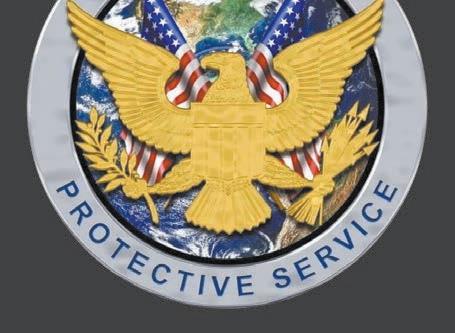
“Mr. Robinson is believed to be homeless. An exam was performed on 2/3/23 and results are pending,” the coroner’s office wrote in an email to The Malibu Times on Feb. 6.
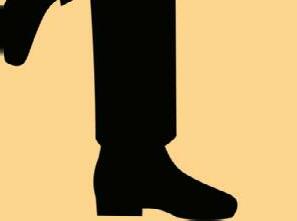
No other information has been publicly released.
Huge Malibu sign gone missing

A huge community sign at the top of Corral Canyon has gone missing. The “Welcome to Corral Canyon Drive Carefully” sign was reported missing on Feb. 2.
Sheriff’s personnel from the Malibu/Lost Hills station are “looking into it.” Some community members are speculating that someone may have stolen the sign from its mounted block. Tools may have been left behind at the scene. The sign that many have called “meaningful to the area” is a few feet wide and may have needed more than one person to haul away.
A spokesperson from the LASD said the department is “working on it” with the area homeowners’ association. Any -











